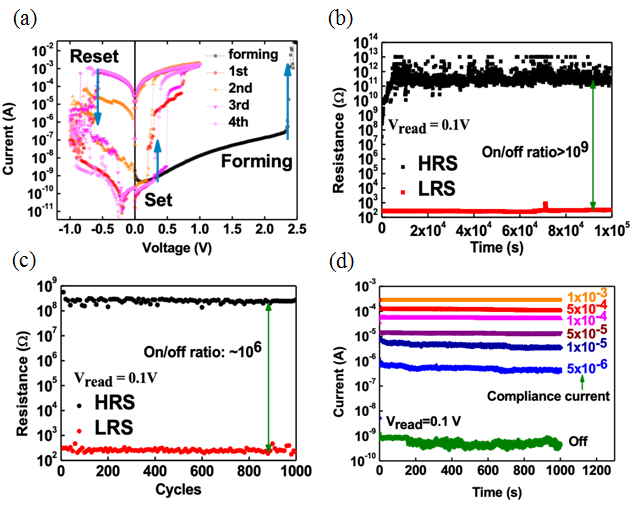 |
|
 |
| |
发行人:黄建璋所长 编辑委员:曾雪峰教授 主编:林筱文 发行日期:2020.11.30 |
| |
|
 |
~ 2020 第七届海峡两岸宽能隙半导体研讨会-首次视讯会议 花絮报导 ~
(时间:2020年10月22日至23日;地点:台湾大学博理馆201会议室)
花絮整理:李翊纶
原订今年于台湾举办之「第七届海峡两岸宽能隙半导体研讨会」,因COVID-19疫情关系,两岸专家学者及产业先进无法齐聚一堂,在台北及花东共同切磋。经两岸主办单位讨论,所有与会学者以及产业先进于2020年10月22日至23日分别聚集大陆及台湾,以两地实体会议地点的网络相互联机,采用远距视讯会议的方式办理。因此,这是我们首度举办「海峡两岸宽能隙半导体研讨会」视讯会议,一共有来自台湾、大陆各个城市40余位重要专家学者一同在在线共襄盛举。
本研讨会旨在促进两岸宽能隙半导体研究领域的专家学者及产业界先进进行深入交流,会议主题涵盖III族氮化物半导体、II-VI族半导体、氧化物半导体等相关材料制备及其应用。本次会议进行方式为台湾、大陆与会者轮流进行专题报告、圆桌论坛以及综合讨论,展开深入的学术研讨。
|
 |
 |
|
图一、会议照片 |
图二、开幕式,会议主席黄建璋教授致词 |
一场成功的视讯会议仰赖计算机、直播设备以及顺畅的网络才得以圆满,可是我的计算机技能普通,也没有举办视讯会议的经验,心情紧张程度可想而知。好在会议主席黄建璋教授的学生集结一支「抢救尼安德塔人大兵」,负责架设会议视讯设备以及会场主控导播工作;另一支「外场服务大军」由本所杨志忠教授助理张珮小姐以及黄建璋教授学生一同协助接待来宾、餐点布置以及环境整理等事务。
会议的第一天我们跟大陆会场约定早上7:30进行最后的会前测试,同学们早上6:30就抵达会场预备,还准备烤面包机、吐司跟各类抹酱一起吃早餐。会议闭幕结束后大家边整理会场边聊天,笑声不断,黄建璋教授也陪我们收拾完毕才离开,充分展现我们是一个team的态度。
|
 |
 |
 |
|
图三、视讯主控台以及负责同学 |
图四、黄建璋教授进行专题报告 |
图五、今天起得早,一起烤土司吧 |
记得茶会的时候有一位教授曾说:「没想到我们才来两天,你们要筹备一个月!」在此特别感谢台大教学发展中心暨数字学习中心出借部份设备,对于网络直播等技术层面也提供我们诸多宝贵建议。感谢台大光电所所办同仁以及张珮小姐提供行政流程方面的协助、感谢黄建璋教授的学生利用课余时间大力相助、感谢电机系系办网络管理员以及博理馆管理中心同仁的帮忙,让我们在这特别的一年依然能迈出步伐向前冲,举办首次「海峡两岸宽能隙半导体研讨会」视讯会议。
|
 |
|
图六、台湾与会师长与投影幕中的大陆与会专家的团体照 |
|
 |
|
|
|
|
|
|
|
|
|
 |
|
| |
|
 |
Synthesizer-free 28-GHz MMW Fiber-wireless Link with Orthogonally Polarized Dual-mode VCSEL
Professor Gong-Ru Lin’s Laboratory
Graduate Institute of Photonics and
Optoelectronics, National Taiwan University
台湾大学光电所 林恭如教授
A synthesizer-free 28-GHz is proposed for fifth-generation (5G) millimeter wave over fiber (MMWoF) link by using orthogonally polarized dual-mode vertical-cavity surface-emitting laser (VCSEL) as the frontend transmitter, and the power envelope detection is employed for self-heterodyne down-conversion of the generalized frequency division multiplexing (GFDM) data stream. The demonstrated MMWoF link exhibits superior immunity to the residual frequency and phase noises as well as the inter-carrier interference induced by the free-running dual-mode carrier. After equalizing the dual modes with an extremely weak power as low as -26 dBm at TM-mode polarization, the dual-mode power extinction of only 5.4 dB is achieved for optimizing the remote-node optical heterodyne of 28-GHz MMW carrier with a peak power of -59.8 dBm before antenna propagation with remaining similar relative intensity noise (RIN) as compared to the free-running case. Moreover, the mode partition noise (MPN) is increased less than 2 dBc/Hz after mode-power equalization.
|

|
|
Fig. 1 Schematic diagram of 5G MMWoF link based on 2-l VCSEL transmitter with novel QAM-GFDM.
(a) The
photograph
and (b)
the
optical
spectrum
of
2-l VCSEL without package. |
 |

|
|
Fig. 2 (a) The free-running polarization characteristic and (b) the P-I curves without and with master controlling of the dual-mode VCSEL. |
Fig. 3 The RIN and MPN of the dual-mode VCSEL at (a) free-running operation with different bias current and (b) TE- (c) TM-mode injection controlling. |
For back-to-back optical downstream wireline transmission, the receiving GFDM data optimizes its BER to 2.2 ´10-4 by adjusting the bias current of the dual-mode VCSEL to 8 mA (3 Ith), and by grouping the GFDM data matrix with total symbols of
N=K´M with
K=2 subcarriers and
M=24 timeslots. After long-reach 50-km DM-SMF, the qualified receiving power sensitivity is -12 dBm, whereas the decoding GFDM data reveals improved receiving sensitivity with extremely low power penalty of only 0.3 dB. After wireless delivering over 2 m in free space, the self-heterodyne down-conversion by power envelope detection guarantees the down-converted QAM-GFDM data stream with an average power of -48.4 dBm after optimizing the impedance matching by selecting appropriate frequency response of the power envelope detector. As a result, the wireless MMW transmission of 8-Gbit/s 4-QAM GFDM data stream is qualified with EVM of 16.9%, SNR of 8.5 dB and BER of 3.8´10-3.
 |

|
|
Fig. 4 The constellation plots and decoded SNR spectra of the modulated 30-Gbit/s 64-QAM GFDM data by the dual-mode VCSEL after BtB, 25-/50-km SMF and 50-km DM-SMF transmissions. |
Fig. 5 The constellation plot, RF and SNR spectrum of the delivered 4-QAM GFMD data after 2-m free-space transmission and self-heterodyne down-conversion. |
Reference:
[1] C.-Y. Lin, Y.-C. Chi, C.-T. Tsai, H.-Y. Wang and G.-R. Lin, “39-GHz millimeter-wave carrier generation in dual-mode colorless laser diode for OFDM-MMWoF
transmission,”
IEEE
J. Sel. Top. Quantum Electron.,vol.
21, no. 6, pp. 609-618, 2015.
[2] C.-T. Tsai, C.-H. Lin, C.-T. Lin, Y.-C. Chi and G.-R. Lin, “60-GHz millimeter-wave over fiber with directly modulated dual-mode laser diode,”
Sci Rep,
vol. 6, no. 27919, pp. 1-12, 2016.
[3] C.-Y. Lin, Y.-C. Chi, C.-T. Tsai, H.-Y. Wang, H.-Y. Chen, M. Xu, G.-K. Chang and G.-R. Lin, “Millimeter-wave carrier embedded dual-color laser diode for 5G MMW of link,”
J. Light. Technol.,
vol. 35, no. 12, pp. 2409-2420, 2017.
[4] C.-Y. Lin, Y.-C. Chi, C.-T. Tsai, H.-Y. Chen and G.-R. Lin, “Two-color laser diode for 54-Gb/s fiber-wired and 16-Gb/s MMW wireless OFDM transmissions,”
Photonics Res., vol. 5, no. 4, pp. 271-279, 2017.
[5] Z.-K. Weng, Y.-C. Chi, H.-Y. Kao, C.-T. Tsai, H.-Y. Wang and G.-R. Lin, “Quasi-color-free LD-based long-reach 28-GHz MMWoF With 512-QAM OFDM,”
J. Light. Technol.,
vol. 36, no. 19, pp. 4282-4297, 2018.
A New Fitting Method for Ambipolar Diffusion Length Extraction in Thin Film Structures Using Photoluminescence Measurement with Scanning Excitation
Professor Ming-Hua Mao’s Laboratory
Graduate Institute of Photonics and
Optoelectronics, National Taiwan University
台湾大学光电所 毛明华教授
A new simple method is proposed to extract the ambipolar diffusion length for two-dimensional (2D) electronic transport in thin film structures using a scanning photoluminescence microscopy (SPLM) setup. No spatially-resolved photoluminescence detection methods are required. By measuring the excitation-position-dependent PL intensity across the edge of a semiconductor, ambipolar diffusion length can be extracted from the SPLM profile through a simple analytic fitting function. Numerical simulation was first used to verify the fitting method. Then the fitting method was applied to extract the ambipolar diffusion length from the measured SPLM profile of a GaAs thin film structure. Carrier lifetime was obtained in an accompanying time-resolved photoluminescence measurement under the same excitation condition, and thus the ambipolar diffusion coefficient can be determined simultaneously. The new fitting method provides a simple way to evaluate carrier transport properties in 2D electronic transport structures such as thin films or quantum wells. This work has been published in Scientific Reports:
Chu, C. H., Mao, M.-H., Lin, R. Y. & Lin, H. H. A New Fitting Method for Ambipolar Diffusion Length Extraction in Thin Film Structures Using Photoluminescence Measurement with Scanning Excitation.
Scientific Reports
10,
5200, doi:10.1038/s41598-020-62093-w (2020).
|

|
|
Fig. 1 (a) 2D photocarrier distribution mappings under CW excitation with varied excitation position (x,y) = (xpump,0). (b) Cross-sections of the above mappings at
y = 0 & scanning profile for the normalized total photocarrier number
δN under pulse excitation. The result without Auger recombination is also shown for comparison. |
|
 |
| |
|
|
|
 |
|
| |
|
 |
论文题目:金属碘化物于光电电子组件之研究
姓名:李家硕 指导教授:吴志毅教授
| 摘要 |
|
金属卤化物为当今热门研究主题之一,其中最为注目的钙钛矿材料具有优越的光电特性,已被广泛应用于光电、电子组件中,例如电阻式内存。由于低制成成本、高可调变性及可媲美或甚至更高的效能,可望取代传统制成的材料。但材料中含有有毒元素铅及大气下结构不稳定性问题,因此本论文将无毒金属卤化物材料(碘化铋)取代钙钛矿作为电阻式内存阻值切换层。本论文可以分成两部分,前半部分探讨以铅钙钛矿材料为主动层其组件的异常现象:光浸润效应以及可调变光电流方向现象,并利用调变组件结构抽丝拨茧找出主要因素为哪层或是哪些异质结构影响,并且利用光电子能谱探讨载子于接口能阶传输机制以及材料于持续照光下,材料原子间键结变化,并且提出可能机制。而后半部分探讨层状碘化铋材料做为软性电阻式内存阻值切换层可行性,在探讨其与下电极材料间的交互作用中发现,电极基材的化学特性对于碘化铋的表面形貌、化学键结、结晶性以及电阻切换特性有莫大的影响,亦发现碘化铋缺陷(金属铋)的含量对于生成电压有很大的影响,因此本文提出三种方法改善碘化铋的表面形貌、化学键结及结晶性:透过使用金属银当作下电极缓冲层、自组装分子接口改质以及凡德瓦尔材料作为缓冲层,其中以凡德瓦尔材料作为缓冲层最具广泛性,其组件可达成无需生成电压、低操作电压以及高内存窗口,且具高弯折忍受力。本研究不只展现碘化铋作为可挠式电阻式内存切换层的高潜力,其与金属材料交互作用的探讨,亦将有助于其它碘化铋组件的应用与设计。
|

|
|
图一、(a)电阻式内存结构图(左)与自组装分子ODTS与硅基板键结示意图(右)
(b)碘化铋在有(右)、无(左)自组装分子修饰之硅基板之电子扫描显微镜图
(c)为碘化铋在硅基板之X射线绕射图 |
|

|
|
图二、(a) Si/ODTS/BiI3/Au组件之阻值切换特性图
(b) Si/ODTS/BiI3/Au组件阻值随时间变化特性图
(c) Si/ODTS/BiI3/Au组件对于电压可容忍性特性图
(d) Si/ODTS/BiI3/Au组件多阶段存取特性图 |
|
|
|
 |
|
 |
|
| |
|
 |
— 资料提供:影像显示科技知识平台 (DTKP, Display Technology
Knowledge Platform) —
—
整理:林晃岩教授、卓真禾 —
百万像素单光子相机
先进的显微镜和量子应用(例如亚单击噪声成像和量子光学雷达(LiDAR))都可以受益于单光子和高时间分辨率低噪声的检测功能。过去具有这种能力的检测器通常被限制在小于1,000的像素数,甚至是单像素的实现。
现在,Kazuhiro Morimoto与在瑞士洛桑联邦理工学院(EPFL)和日本佳能(Canon)公司的同事报导了(Optica 7, 346-354; 2020)一种基于单光子雪崩式二极管数组的百万像素光子计数相机(single-photon avalanche diode, SPAD)。其单光子计数分辨率与低于100皮秒(ps)的时间分辨率是透过一兆像素分辨率传感器实现的。相机区块图如图一(a)所示,它包括1024×500像素的两个独立部份,其中下半部份数组基于像素A,上半部份基于像素B。以双二元树控制(dual binary tree control)时间闸,其最小长度为3.8奈秒(ns)(可调至9.6奈秒),其变化为120皮秒(半高全宽)。每行在83 ns内被读出,并分别存储在芯片底部和顶部像素A和像素B的1024位和512位输出缓存器中。多任务器以128位的字对其进行扫描,然后透过双并行总线(dual parallel bus)通过128个I/O引脚对芯片外进行传输,从而实现24 kfps的帧速率。图像传感器的显微照片如图一(b)所示。有效区域绘制为圆形,像素A和B的绘制有效直径分别为2.8微米和3.88微米。
|

|
|
图一、百万像素时间闸控SPAD图像传感器架构。(a)传感器区块图;(b)像素数组的芯片显微图和放大图像素数组。 |
此相机可以每秒24,000帧的速度运行,并展示了二维和三维成像功能。此相机是EPFL的先进量子架构实验室在SPAD领域超过15年研究的最高峰。Morimoto告诉《自然光子学》,自2003年以来,当引入互补金属氧化物半导体(CMOS)SPAD后,他们已经开发出越来越大与更快的相机,其目的是以高保真度和时间分辨率捕捉极快的自然现象。
正如Morimoto指出的那样,SPAD数组和脉冲激光可以用于重建毫米级精度的三维场景,即使在远距离时,这种应用也非常实时,这是LiDAR应用于汽车技术时的核心目标。大型的SPAD相机也可用于显微镜检查,其中超解析图像的重建具有亚绕射极限分辨率。该设置用于捕捉使用其它测距技术难以测量的复杂场景还算足够灵敏,例如,感测物体通过半透明窗口。
但是这项工作并非没有挑战。Morimoto解释说:「我们的像素尺寸为16微米,我们知道减小的像素尺寸意味着将SPAD缩小到非常小的直径。」「这是未知领域。此外,鉴于我们用 SPAD的最佳CMOS技术的特征尺寸为180奈米,每个像素只能提供7个晶体管。因此,我们开始发挥创造力,并分享了所有可能的结构,包括2×2像素中的3个晶体管。这产生了每个像素具有5.75个晶体管的配置。据我们所知,这是有史以来在闸极控制SPAD像素中实现的最少的晶体管。」
高分辨率和深度检测功能也可能对虚拟实境和扩增实境产生影响。Morimoto表示,该技术可以在此类应用中实现更无缝的交互性和更现实的设置。他还解释说,当在汽车表面使用多个LiDAR设备时,该系统可以实现前所未有的运输自主性和安全性。在更遥远的未来,量子通讯,传感和计算可能会受益于具有数百万像素分辨率的光子计数相机,从而与光学量子位(qubit)进行交互。
|
参考资料: |
[1] David Pile, “Megapixel single-photon camera,”
Nature Photonics volume
14, 597(2020)
https://www.nature.com/articles/s41566-020-0697-7
DOI: 10.1038/s41566-020-0697-7
[2] Kazuhiro Morimoto, Andrei Ardelean, Ming-Lo Wu, Arin Can Ulku, Ivan Michel Antolovic, Claudio Bruschini, and Edoardo Charbon, “Megapixel time-gated SPAD image sensor for 2D and 3D imaging applications, ” Optica Vol. 7, Issue 4, pp. 346-354 (2020)
https://www.osapublishing.org/optica/abstract.cfm?uri=optica-7-4-346
DOI: 10.1364/OPTICA.386574
|
| |
|
|
|
|
|
|
|
|
|
 |
|
 |
|
|
|
 |
|
 |
|